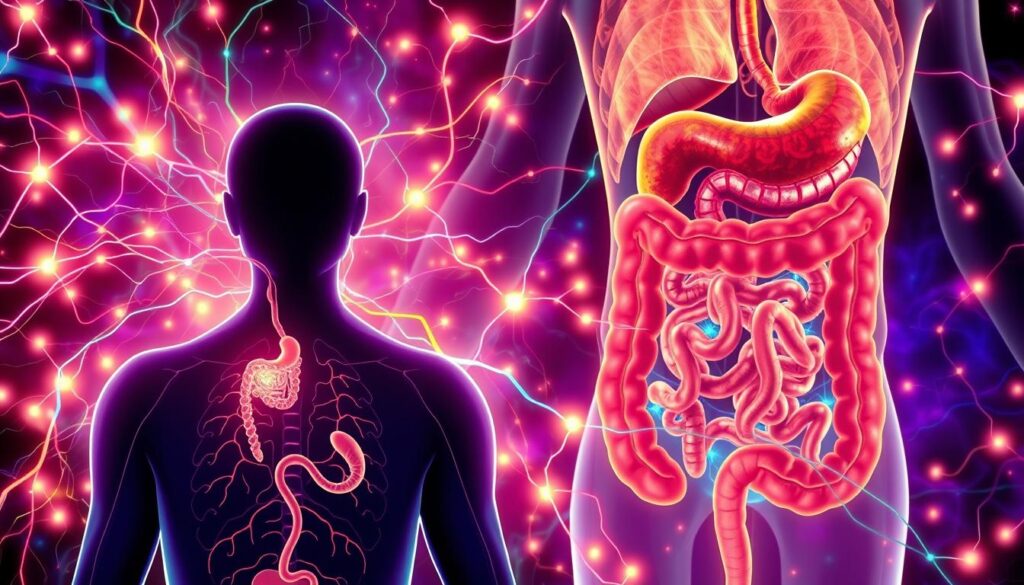Blog
The Simple Science of Calorie Deficit: How to Lose Weight Without Extreme Dieting

Losing weight doesn’t have to mean extreme dieting or deprivation. At its core, weight loss is about understanding the calorie deficit, a simple yet effective concept that can help you achieve your goals without feeling like you’re missing out.
A calorie deficit occurs when you consume fewer calories than your body burns, resulting in weight loss. This can be achieved through a combination of diet, exercise, and lifestyle changes. By grasping this fundamental principle, you can develop a more sustainable approach to weight loss.
By the end of this article, you’ll have a clear understanding of how to create a calorie deficit that works for you, without resorting to extreme measures. We’ll explore practical tips and strategies to help you get started on your weight loss journey.
Key Takeaways
- Understanding the concept of calorie deficit is crucial for effective weight loss.
- A calorie deficit can be achieved through a combination of diet, exercise, and lifestyle changes.
- Creating a sustainable calorie deficit is key to long-term weight loss success.
- Practical tips and strategies can help you achieve a calorie deficit without extreme dieting.
- A well-planned approach to calorie deficit can lead to a healthier and more balanced lifestyle.
The Science Behind Weight Loss
To lose weight, it’s essential to grasp the fundamental principles that govern how our bodies use energy. Weight loss is a complex process influenced by various physiological factors.
The Energy Balance Equation
The energy balance equation is a fundamental concept in understanding weight loss. It states that weight loss occurs when the energy expended is greater than the energy consumed. In simpler terms, you need to burn more calories than you eat. This equation is influenced by factors such as your basal metabolic rate (BMR), physical activity level, and the thermic effect of food.
| Component | Description | Example |
|---|---|---|
| Basal Metabolic Rate (BMR) | Calories burned at rest | 1,800 calories/day |
| Physical Activity Level | Calories burned through activity | 500 calories/day |
| Thermic Effect of Food | Calories burned digesting food | 100 calories/day |
How Your Body Stores and Burns Fat
When you consume more calories than you burn, the excess energy is stored as fat. Conversely, when you burn more calories than you consume, your body uses stored fat for energy, leading to weight loss. This process is mediated by various hormonal signals, including insulin and leptin, which play crucial roles in regulating hunger, metabolism, and fat storage.

Understanding Calorie Deficit for Weight Loss
Understanding how to calculate calorie deficit is crucial for effective weight loss. A calorie deficit occurs when you consume fewer calories than your body burns, resulting in weight loss. This concept is simple yet powerful.
Definition and Basic Principles
A calorie deficit is achieved by either reducing your caloric intake or increasing your physical activity, or a combination of both. The basic principle is that when you consume fewer calories than you burn, your body uses stored fat for energy, leading to weight loss. As registered dietitian Abbey Sharp notes, “Creating a calorie deficit is not just about cutting calories drastically; it’s about making sustainable lifestyle changes.”
“The key to a successful calorie deficit is not just reducing calories, but doing so in a way that is sustainable and maintainable over time.”
The 3,500 Calorie Rule Explained
The 3,500 calorie rule suggests that a deficit of 3,500 calories is needed to lose one pound of body fat. This rule is a useful guideline, but it’s not entirely accurate for everyone due to variations in metabolism and body composition. Nonetheless, it provides a good starting point for understanding the calorie deficit needed for weight loss.
Realistic Expectations for Fat Loss
Realistic expectations for fat loss vary from person to person. A safe and sustainable rate of weight loss is generally considered to be 1-2 pounds per week. This rate may seem slow, but it’s more likely to result in long-term success. As fitness expert Michelle D. Johnson emphasizes, “Focusing on gradual weight loss helps in maintaining muscle mass and ensuring that the weight lost is primarily fat.”
By understanding and applying the concept of a calorie deficit, individuals can set themselves up for successful weight loss. It’s about making informed choices that lead to a healthier, more sustainable lifestyle.
Determining Your Maintenance Calories
Your maintenance calories serve as the baseline for calculating your ideal calorie intake for weight loss. Maintenance calories refer to the number of calories your body needs to function at rest, plus the calories burned during physical activity.
Factors Affecting Your Metabolic Rate
Several factors influence your metabolic rate, including age, gender, weight, height, and activity level. For instance, muscle mass plays a significant role in determining your resting metabolic rate (RMR), as muscle tissue burns more calories than fat tissue.
Methods to Calculate Your Baseline Needs
There are several methods to estimate your maintenance calories, including the Harris-Benedict Equation and the Mifflin-St. Jeor Equation. These formulas consider factors like age, gender, weight, and height to provide an estimate of your RMR.
| Formula | Men | Women |
|---|---|---|
| Harris-Benedict Equation | 66 + (6.2 * weight) + (12.7 * height) – (6.8 * age) | 655 + (4.35 * weight) + (4.7 * height) – (4.7 * age) |
| Mifflin-St. Jeor Equation | (10 * weight) + (6.25 * height) – (5 * age) + 5 | (10 * weight) + (6.25 * height) – (5 * age) – 161 |
Adjusting for Age, Gender, and Activity Level
After calculating your RMR, you need to adjust it based on your activity level. This is done by multiplying your RMR by an activity factor, which ranges from 1.2 for sedentary individuals to 1.9 for highly active individuals.
How to Calculate Your Ideal Calorie Deficit
Calculating your ideal calorie deficit is a crucial step in achieving your weight loss goals without compromising your overall health. A calorie deficit occurs when you consume fewer calories than your body burns, resulting in weight loss. However, the deficit must be managed carefully to ensure it’s safe and effective.
Safe Deficit Ranges for Different Body Types
Different body types require different approaches to calorie deficit. For most adults, a safe deficit range is between 500 to 1000 calories per day. According to Dr. Michael Dansinger, “A daily calorie deficit of 500 calories can lead to a weight loss of approximately 1 pound per week, which is a safe and sustainable rate.” Avoiding extreme deficits is crucial as they can lead to nutrient deficiencies and other health issues.
Setting Appropriate Weekly Weight Loss Goals
Setting realistic weekly weight loss goals is vital. Aiming to lose 1-2 pounds per week is generally considered safe and achievable. This rate of weight loss is more likely to be maintained over time. As
“The key to successful weight loss is setting realistic goals and being consistent.”
noted by a health expert.
When to Adjust Your Deficit
It’s essential to monitor your weight loss progress and adjust your calorie deficit as needed. If you find that you’re losing weight too quickly, you may need to increase your calorie intake. Conversely, if you’re not losing weight, you might need to further reduce your calorie intake or increase your physical activity.
By understanding how to calculate and adjust your calorie deficit, you can achieve your weight loss goals in a healthy and sustainable way.
Creating a Calorie Deficit Through Diet
A well-planned diet can help create the calorie deficit needed for weight loss. By focusing on nutrient-dense foods, controlling portion sizes, and planning meals effectively, individuals can achieve their weight loss goals without extreme dieting.
Nutrient-Dense Foods That Keep You Full
Eating foods that are high in nutrients but low in calories is crucial for maintaining satiety while on a calorie deficit. Foods rich in fiber, such as vegetables, fruits, and whole grains, are particularly effective. Incorporating lean proteins and healthy fats into meals can also enhance feelings of fullness.
Examples of Nutrient-Dense Foods:
- Leafy greens like spinach and kale
- Lean proteins such as chicken and fish
- Whole grains like quinoa and brown rice
- Fruits like berries and apples
Portion Control Strategies
Controlling portion sizes is vital to maintaining a calorie deficit. Using smaller plates, measuring food portions, and being mindful of serving sizes can help. It’s also beneficial to eat slowly and stop when satisfied, rather than waiting until feeling full.
“Portion control is not just about eating less; it’s about eating the right amount of the right foods.” – Nutrition Expert
Meal Planning for Success
Effective meal planning is a key component of creating a calorie deficit. By planning meals in advance, individuals can ensure they are consuming nutrient-dense foods while avoiding high-calorie options. Macro tracking can be a useful tool in this process, helping to balance protein, carbohydrates, and fats.
| Meal | Food | Calories |
|---|---|---|
| Breakfast | Oatmeal with fruits | 300 |
| Lunch | Grilled chicken with vegetables | 400 |
| Dinner | Salmon with quinoa | 500 |
By combining these strategies, individuals can successfully create a calorie deficit through dietary changes, supporting their weight loss journey.
The Role of Exercise in Enhancing Your Deficit
A well-structured exercise plan is essential for maximizing calorie deficit and achieving sustainable fat loss. Exercise not only burns calories directly but also builds muscle mass, which can further increase your resting metabolic rate.
Cardio vs. Strength Training for Fat Loss
Both cardio and strength training have their places in a weight loss regimen. Cardio exercises, such as running or cycling, are effective for burning calories during the activity. On the other hand, strength training builds muscle, which can elevate your resting metabolic rate, helping your body burn more calories at rest.
According to a study published in the Journal of the American Medical Association, a combination of both cardio and strength training yields the best results for weight loss and overall health.
“Exercise is a key component in the prevention of obesity and related diseases. A combination of aerobic exercise and resistance training is recommended for optimal health benefits.” –
How Exercise Affects Your Daily Calorie Needs
Exercise impacts your daily calorie needs in two main ways: by directly burning calories during the activity and by potentially increasing your resting metabolic rate if you build muscle through strength training.
| Exercise Type | Calories Burned | Impact on Resting Metabolic Rate |
|---|---|---|
| Cardio | High | Temporary Increase |
| Strength Training | Moderate | Long-term Increase |
Building an Exercise Plan That Supports Your Goals
To create an effective exercise plan, consider the following steps:
- Set specific, achievable goals for both cardio and strength training.
- Choose activities you enjoy to ensure long-term adherence.
- Gradually increase the intensity and duration of your workouts.
- Incorporate a mix of exercises to avoid plateaus and prevent overuse injuries.
By understanding the role of exercise in enhancing your calorie deficit and tailoring your exercise plan to your needs, you can achieve sustainable fat loss and improve your overall health.
Macro Tracking for Optimal Results
Effective macro tracking is the backbone of a successful weight loss strategy. By understanding and managing your macronutrient intake, you can optimize your diet for better results.
Protein, Carbs, and Fats: Finding Your Balance
Balancing protein, carbohydrates, and fats is crucial for maintaining a healthy diet while losing weight. Protein is essential for muscle repair and growth, carbohydrates provide energy, and fats support various bodily functions. Finding the right balance depends on your individual needs, activity level, and weight loss goals.
For instance, a person aiming to lose weight might require a higher protein intake to maintain muscle mass while reducing carbohydrate and fat intake to create a calorie deficit. A sample balance could be:
| Macronutrient | Percentage of Daily Calories |
|---|---|
| Protein | 30-40% |
| Carbohydrates | 30-40% |
| Fats | 20-30% |
Tools and Apps for Easy Tracking
Utilizing the right tools and apps can simplify macro tracking. Popular options include MyFitnessPal, Lose It!, and Cronometer. These apps allow you to log your food intake, track your macronutrient balance, and monitor your progress over time.
When to Track and When to Estimate
While tracking your macros is important, there are times when estimating can be sufficient. For daily tracking, using an app can be very helpful. However, for meals that are very similar or when you’re in a rush, estimating based on previous logs can be a good alternative.
By combining precise tracking with educated estimating, you can maintain a consistent approach to your macro tracking without feeling overwhelmed.
Common Mistakes When Creating a Calorie Deficit
Creating a calorie deficit is a straightforward concept, but its execution can be fraught with pitfalls. Many people struggle to achieve their weight loss goals because they fall into common traps that can hinder their progress. Understanding these mistakes is crucial to successful weight loss.
Cutting Calories Too Drastically
One of the most significant mistakes is cutting calories too drastically. While it might seem logical that reducing calorie intake drastically will lead to faster weight loss, it often has the opposite effect. Drastic calorie reduction can slow down your metabolism, making it harder to lose weight in the long run. It can also lead to nutrient deficiencies and decreased muscle mass. A more sustainable approach is to make gradual adjustments to your calorie intake.
Ignoring Nutritional Quality
Another common mistake is ignoring the nutritional quality of the food you eat. Focusing solely on calorie count can lead to nutrient deficiencies. It’s essential to prioritize nutrient-dense foods that provide vitamins, minerals, and other beneficial compounds. Foods high in protein, fiber, and healthy fats can help keep you full and satisfied while supporting overall health.
Overlooking Hidden Calories in Beverages and Condiments
Many people overlook the calories in beverages and condiments, which can significantly impact your overall calorie intake. Sugary drinks, coffee creamers, and sauces can add up quickly. Being mindful of these hidden calories and making healthier choices can help you stay on track with your calorie deficit goals.
Overcoming Weight Loss Plateaus
Reaching a weight loss plateau doesn’t mean you’ve failed; it simply indicates that your body has adjusted to your new diet and exercise routine. At this point, it’s essential to understand why plateaus happen and how to overcome them to achieve sustainable fat loss.
Why Plateaus Happen
A weight loss plateau occurs when your body adapts to the calorie deficit you’ve created, either by reducing your resting metabolic rate or by becoming more efficient at storing fat. This adaptation makes it harder to lose weight over time.
Strategies to Break Through Stalls
To overcome a plateau, consider adjusting your diet or exercise routine. This could mean reducing your daily calorie intake further or increasing your physical activity. Mixing up your workout can also help by challenging your muscles in new ways.
| Strategy | Description | Benefit |
|---|---|---|
| Adjust Calorie Intake | Recalculate your daily calorie needs. | Creates a new calorie deficit. |
| Increase Physical Activity | Add more exercise or intensity to your routine. | Boosts metabolism and burns more calories. |
| Mix Up Your Workout | Change your exercise routine. | Challenges muscles and prevents adaptation. |
When to Recalculate Your Needs
If you’ve been at a plateau for several weeks, it’s time to recalculate your calorie deficit. Use a calorie calculator to determine your new maintenance calories and adjust your diet accordingly.
The Psychology of Sustainable Fat Loss
Achieving sustainable fat loss is as much about understanding your mindset as it is about diet and exercise. A successful weight loss journey involves more than just cutting calories or increasing physical activity; it requires a deep understanding of the psychological factors at play.
Mindset Shifts for Long-Term Success
One of the most critical mindset shifts is adopting a long-term perspective. Instead of focusing on quick fixes, individuals should aim to develop sustainable habits that promote overall health and well-being. This involves setting realistic goals and celebrating small victories along the way.
Another crucial aspect is developing a growth mindset. This means embracing challenges as opportunities for growth and learning, rather than threats to ego or well-being. By doing so, individuals can foster resilience and maintain motivation even in the face of setbacks.
Dealing with Social Pressure and Food Environments
Social environments and food cultures can significantly impact eating habits. To navigate these challenges, it’s essential to develop strategies for dealing with social pressure. This might involve communicating dietary goals with friends and family or finding supportive communities that share similar objectives.
Being mindful of food environments is also crucial. This includes being aware of the availability and marketing of unhealthy foods, as well as finding healthy alternatives that are both accessible and appealing. Creating a supportive food environment at home can also play a significant role in sustaining healthy eating habits.
Building a Healthy Relationship with Food
Building a healthy relationship with food is fundamental to sustainable fat loss. This involves moving away from restrictive dieting and towards a more balanced and intuitive eating approach. It’s about developing a positive relationship with food, where choices are guided by nutritional needs and personal preferences rather than fear or deprivation.
By focusing on these psychological aspects, individuals can lay the groundwork for sustainable fat loss that lasts a lifetime. It’s about creating a healthier, more balanced relationship with food and the body, supported by a positive and resilient mindset.
Real-Life Success Stories: Calorie Deficit in Action
The effectiveness of a calorie deficit for weight loss is best illustrated through real-life transformations. Many individuals have successfully achieved their weight loss goals by understanding and applying the principle of calorie deficit.
Before and After Transformations
Numerous individuals have shared their incredible weight loss journeys, showcasing dramatic before and after transformations. For instance, check out these incredible weight loss transformation photos that highlight the power of a well-executed calorie deficit plan.
Lessons Learned from Those Who Succeeded
Those who have successfully lost weight using a calorie deficit often share common insights. They emphasize the importance of patience, consistency, and understanding one’s maintenance calories. By doing so, individuals can create a sustainable plan that not only helps them lose weight but also maintain their weight loss over time.
Common Threads Among Success Stories
A common thread among successful weight loss stories is the adoption of a sustainable calorie deficit. Rather than opting for extreme dieting, individuals who succeed typically focus on making gradual, maintainable lifestyle changes. This approach not only supports their weight loss journey but also fosters a healthier relationship with food and exercise.
By examining these real-life success stories, it becomes clear that a calorie deficit, when implemented correctly, can be a highly effective strategy for weight loss. It’s about making informed choices and adopting a balanced lifestyle that includes a nutritious diet and regular physical activity.
Conclusion: Your Path to Sustainable Weight Loss
Achieving a healthy weight is within your reach by understanding and applying the concept of a calorie deficit. By creating a calorie deficit, you can lose weight without resorting to extreme dieting. This approach focuses on sustainable, long-term results rather than quick fixes.
To start your journey, determine your maintenance calories and set a realistic calorie deficit goal. Focus on nutrient-dense foods, portion control, and regular exercise to support your weight loss. Macro tracking can also help you stay on track.
Remember, patience and consistency are key. Avoid common mistakes like cutting calories too drastically, and stay motivated by celebrating small victories along the way. With a well-planned calorie deficit strategy, you can achieve your weight loss goals and maintain a healthy lifestyle.




